Experienced and Seasoned Workforce
A Key to Bridging the Workforce Gap
Why hire older workers?
Known Facts:
- 32% of the current workforce are eligible to retire in less than 10 years
- People are living longer – we are healthier –therefore able to contribute longer in the work place
- 68% of the baby boomers currently aged 54 – 72 are still in the workforce today.
- By 2020, there will be more people over the age of 65 than kids in the school system.
- Recruitment opportunity – extend the life cycle to enable older workforce stay on the job longer in addition to convincing experienced retirees to return to work.
- We are sitting on a gold mine of people who are the prime of their life – of thinking creatively, ingenuity, resourcefulness – that we owe it to both ourselves AND them – that we should tap.
However attitudes don’t reflect this.
Myth #1
Older workers are expensive, unimaginative and afraid of technology.
Reality
At this point in the game, these workers are typically more focused on a job that provides them meaning and flexibility versus wage. They bring a different perspective to the playing field and are eager to learn new skills.
Myth #2
Older workers are less creative, less willing to take initiative on the job or learn new processes or information, and less able to perform physically demanding work.
Reality
Older workers bring experience which translates to leadership skills. In many cases, taking the initiative is second nature for them given the opportunity.
Provide opportunity for your experienced workforce to play the role of mentor to your newer staff allowing them to share their expertise and experiences.
Myth #3
Older workers will cost employers more as it relates to healthcare costs, pension costs.
Reality
Many of our older workforce do not require the full healthcare plan. Many times it is engagement, opportunity and experiences that are more sought out with a job than the benefits.
Why should/would employers look to hire this aging population?
They offer key traits our employers are seeking:
- Knowledgeable, loyal and professional
- Higher median tenure – 3x higher for 55-64 year olds compared to 25-34 year olds
- Primary strengths: Strong leadership, communication skills, commitment and critical analysis
- Notable strong work ethic, reliability, productivity and resiliency
- Mentorship and knowledge transfer from older to younger employees is valued and much needed
- Flexible schedules are attractive to older workers, allowing managers to adjust their schedules based on employer need, positions that are often high turnover in younger age cohorts.
- Maturity and Resilience
- Earnings is not their primary focus – it’s value added, passion and responsibility
- Grounded in the community – not going to leave for bigger dreams
4 Key Actions to Take
Shift your thinking to alter your perceptions. Take a fresh look at your company values. These individuals bring experience, loyalty, leadership and professionalism.
Doing these things WILL increase your ability to recruit AND retain top talent for your organization!
Development
Focus your company workforce strategy on talent upskilling, dual training and using automation as an asset.
Transition Planning
Offer flexible work schedules or part time status option for an extended transitional plan.
Knowledge Transfer
Mentoring and sharing of information with the rising workforce.
Consulting
Retiree to the rescue programs—tap into retiree professionals for short time projects or pathways in high demand.
How do we:
What do employers need to do to attract this work force?
- Consider realigning your jobs to fit the skill and availability of this viable workforce
- Be flexible in scheduling – can they work remotely, part time? Mornings or afternoons? – some of the same flexibility that our “younger” workforce is looking for.
- Support policies that benefit older workers
- Celebrate older worker’s value throughout your organization
- Talk to your experienced staff and together determine ways your employees can remain employed longer with you.
- Look for ways to encourage two-way mentoring – value their work experience and knowledge of your industry. Help provide ways to share this knowledge with your younger employees.
Retention Recommendations:
- Encourage two-way mentoring
- Continue to place older workers in positions where their work experience, existing relationships, task knowledge, and “big picture” grasp benefit younger workers, in addition to meeting their own work goals.
- Encourage older workers to be open and receptive to the skills and knowledge of younger workers as well
- As an employer you need to create career pathways for older workforce just as you do for your younger workers
- Some older workers want to scale back their hours yet retain their benefits.
- Others value added flexibility to care for an aging spouse or parents.
- Perhaps they need to transition to a desk job after a career working in the field.
- Some workers simply need to continue to work as long as they can as they don’t have enough money saved
Ideas to retain your older workforce:
- Offer compensation and benefits to attract and retain their desires
- Focus on flexible work schedules
- Offer benefits that include health insurance
- Offer the option of working remotely as appropriate for your business
- Provide additional flexible workplace offerings
Why is this so important to your business success?
Keep in mind, many of the same things you are doing to attract and retain a sustainable workforce of the future are some of the same things that will retain or return older workers to the workforce.
The knowledge transfer in an organization is one of the biggest drains and has the worst impact on organizations when people retire and leave the organization. This loss of knowledge has a huge impact on your company’s customer.
Jumping to the assumption that an older worker needs to get out of the way because they are not innovative or engaged anymore because of their age is simply short sided and wrong. It could be a number of things causing this disengagement. Take the time to have a conversation with these valued employees and allowing them flexibility to keep them contributing to the organization could mean all of the difference.
Employers should recognize retirees and older workers as a valuable talent resource to be relied upon for their institutional knowledge and mentoring skills for new workers. This is a population to be engaged and not overlooked at this critical time of worker shortage.
